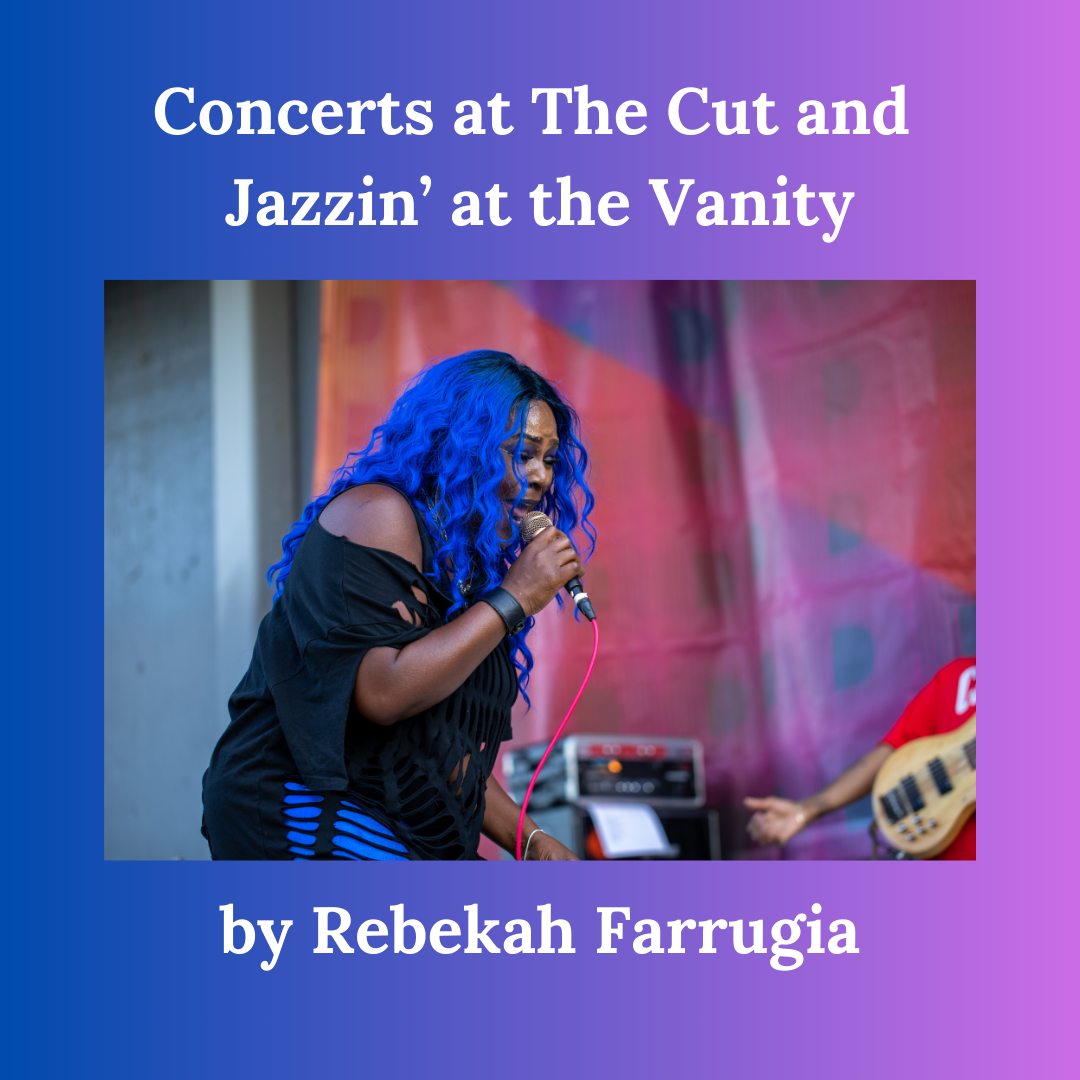“Live music is the beating heart of our city. People look forward to engaging with it. It intertwines itself seamlessly into every facet of our identity. Beyond good eats, our beautiful riverfront, our history, and arts and culture scene, it is our music that truly defines our uniqueness and makes us special.”
Sabrina Underwood, Director, Jazzin’ on Jefferson
The arts not only reflect but also produce people and places. Local events like D.Cipher’s Dequindre Cut summer concert series, the Jefferson-Chalmers’ neighborhood Jazzin’ on Jefferson festival, and community-centered arts based organizations like Sidewalk Detroit contribute to the preservation and production of place. They serve as anchors in the community and bridge diverse demographics, encouraging new ways of thinking and being in the world. They also provide artists with visibility and economic opportunities that are essential to maintaining a vibrant arts scene and healthy creative economy. The activations they produce are intentional acts of placemaking and placekeeping.
The summer of 2023 marked the six year anniversary of D.Cipher, a Detroit based music non-profit organization dedicated to advancing the Michigan music economy through shared learning, collaboration, and partnerships. Over the years, the collective has hosted listening and jam sessions that connect the city’s diverse music community and in-studio sessions with established music artists that create intergenerational learning experiences for emerging artists. In the summer months, D.Cipher organizes weekly live DJ performances at Detroit City Distillery in Eastern Market and shines bright with its Live Summer Concert Series on the Campbell Terrace Pavilion at the Dequindre Cut. With support from the Detroit Riverfront Conservancy and the Knight Foundation, D.Cipher programs live music on The Cut every Wednesday evening from 6pm-9pm all summer long. Hip hop, jazz, rock, blues, gospel, and world music are but some of the featured genres. Past performers include Al Bettis, Amp Fiddler, D-Love, Deanna Lori, Marion Hayden, and Saxappeal. Some, like the band Cast Iron Cornbread that opened the 2022 concert season, literally embody Detroit’s extensive and eclectic music history. Moving between original tracks and cover songs, the band plays rock to blues and even pop with originals like “Trippin’” and “Wild Child” along with Lil Nas X’s “Old Town Road” and hometown heroes the White Stripes “Seven Nation Army.” DJ Janell Hearns keeps the crowd moving between band sets with her eclectic DJ mixes that provide a soundtrack for audiences to dance and vibe to. On any given night, a diverse crowd of people from adjacent neighborhoods, other corners of the city, and the metro area show up with lawn chairs, snacks, and beverages in tow to soak in the sounds reverberating throughout what many consider a sacred space.
Just a few miles east of The Cut, the Jazzin’ on Jefferson festival takes place every June in the Jefferson-Chalmers neighborhood with support from The War Memorial. This annual weekend long event has been celebrating the neighborhood’s deep jazz history for nearly two decades. Historically, the festival has featured a range of local jazz and blues musicians—young and old—such as the James Carter Organ Trio, Marion Hayden Legacy Ensemble, Brandon Williams, and the TBone/RJ Spangler Septet. 2022’s headliners included Grammy award winning funk, hip hop, and jazz fusion group Ghost-Note. The 2023 festival showcased Detroit’s Queen of the Blues Thornetta Davis and jazz saxophonist Dave McMurray. Recently, the festival has experimented with diversifying its lineup and included hip hop artists like Mahogany Jones and renowned Detroit poet jessica Care moore and incorporates the work of visual artists that includes live painting in the mix. For Director Sabrina Underwood, the festival is not only a tool to “get people out to celebrate the rich culture and history of jazz in the neighborhood but to also have great community engagement.” Artistic Director R. J. Spangler adds that “as a person who has lived his life between Jefferson Chalmers and Grosse Pointe, I think it bridges because people from Grosse Pointe come to this event. And the more we have a cross-pollination between our two communities, the better.”
In 2019, the festival footprint was moved eastward a few blocks from the original location on E. Jefferson to the front of the Vanity Ballroom to bring light to the venue’s rich jazz and blues history and to raise funds for its rehabilitation. Its name was temporarily (2019-2023) changed to Jazzin’ at the Vanity. An art deco marvel, the building—which opened in 1929—was a major venue for bands in the 1930s and 1940s. It then experienced a brief revival as a rock venue in the 1960s. Over the following decades, it transitioned from jazz to funk to DJs until its closing in the 1990s. At its peak, the Ballroom was a predominantly whites only venue which meant that the neighborhood’s Black residents mostly danced and communed elsewhere at spaces including the Montecello Ballroom that was located just two blocks away. Restoring the Vanity would revive a premier venue with deep-rooted historical significance that would be open to all.
With respect to placemaking and placekeeping, the Cut is located on the land that was once Black Bottom—the hub of original Detroit black musicians, artists, and culture—before the State bulldozed the neighborhood to construct the I-375 freeway. This history is not lost on the members of D.Cipher or the people behind the Detroit Riverfront Conservancy’s [DRC] Riverwalk and Dequindre Cut projects. Consideration has been given to how to preserve the area’s flora and fauna as well as contributing new arts-based elements that appeal to a range of people but are constructed first and foremost with local residents in mind.
One activation involves putting in a new mural every year to honor the Cut’s history as a popular underground graffiti location for decades before the Conservancy began its restoration work. As Riverfront Conservancy Program Director Rachel Frierson explains it, “[the murals there] have been curated by mostly Detroit artists to kind of keep that homage to the space.” Honoring this space is a mindset that D.Cipher shares. Discussing the significance of the concert series Executive Director Nique Love Rhodes said, “We’re definitely excited and proud that a lot of the artists that we do feature are Black artists with original music so it kinda keeps that spirit alive there and then it’s also a cool opportunity to be able to pay homage to that space and even talk to people about that history so we try to do that when we kick off the night each week and let them know this is the border of Black Bottom.” Artist Relations and Programming Director Sophiyah E. concurs that “there is an unwritten law about honoring things before you. The more I learn about Black Bottom the more I understand why we’re here as people.” Such activations honor and educate as they create new opportunities for artists and cultivate community.
Visit dcipher.org to donate or learn more about upcoming D.Cipher events and activations. More information about Jazzin’ on Jefferson and how to become a sponsor is available at jazzinatthevanity.com
Rebekah Farrugia is a Professor of Communication with a specialization in media and popular music studies at Oakland University. She is co-author (with Kellie Hay) of the book Women Rapping Revolution: Hip Hop and Community Building in Detroit (University of California Press). Her lifelong passion for Detroit music and culture goes back to her tween years growing up across the river in Windsor, Ontario.


